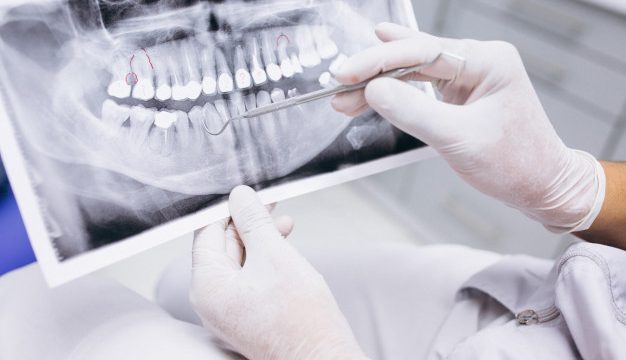
What is a panoramic X-ray in relation to dental health?
A panoramic X-ray shows a complete two-dimensional representation of all the teeth in your mouth. This X-ray also shows the relationship of the teeth to the jaws and the jaws to the head.
What Is an X-ray?
If your doctor or dentist says you need an X-ray, it’s time for your bones to smile for the camera.
An X-ray takes a picture of the inside of your body. Doctors use them to diagnose:
- Broken bones
- Dislocated joints
- Arthritis
- Abdominal pain, in some instances
- Cancer
- Tooth decay
Doctors can also use X-rays to find an object that a child swallowed or to check your lungs for signs of pneumonia or tuberculosis.
What Happens During an X-ray?
Most X-rays don’t require any special preparation. The doctor may ask you to take off jewelry, eyeglasses, or any metal objects or clothing that could get in the way of the image.
Doctors can take images while you stand up or lie down. It depends on the area of your body being examined. The X-ray tube hangs over the table. The film is in a drawer under the table.
The machine sends a beam of radiation through your body. Your hard, dense bones block that beam, so they show up as white on the film below you. The radiation also goes through softer tissue like muscle and fat, which appear in shades of gray in the X-ray. The air in your lungs will look black in the image.
You won’t feel anything during an X-ray, but it can be hard to hold still, and the exam table might be uncomfortable. The technician may take images from a few different angles. She might use pillows or sandbags to prop up a body part to get a better view of the area. She’ll probably ask you to hold your breath so the image doesn’t blur.
Sometimes, the doctor needs more contrast on the image to clearly see what’s going on. She might give you a contrast agent, like barium or iodine. You’ll either swallow it or get it as a shot.
The machine makes clicks and buzzing sounds during the X-ray. The process could take just a few minutes for a bone X-ray or more than an hour for more complicated issues.
X-ray images are digital, so a doctor can see them on a screen within minutes in an emergency. For nonemergencies, it may take a day or so for the doctor to review the X-ray and get back to you with the results.
Is It Safe?
X-rays are one of the oldest and most common forms of medical imaging. Doctors say the benefit of making the correct diagnosis outweighs the risks. Still, there a few safety issues to consider.
- Slight cancer risk. Too much radiation exposure can cause cancer, but the amount in an X-ray is generally low. Adults are less sensitive to radiation than children.
- Kids and X-rays. If your child needs an X-ray, the technician may restrain him to make sure he stays still. This will prevent the need for repeated tries. It won’t hurt him. If you stay in the room with him, you’ll get a lead apron to wear to prevent radiation exposure.
- Pregnancy. Tell your doctor if you’re pregnant or think you might be. She may use a different imaging test so your baby isn’t exposed to radiation.
- Reaction to contrast agent. There’s a chance you could have an allergic reaction, but it’s rare. Ask your doctor what symptoms to watch for. Let him know if you have pain, swelling, or redness at the site of the shot.
What an X-ray Doesn’t Show
X-rays are great to check for broken bones or rotting teeth, but other imaging tests are better if you have muscle or tendon injuries.
Your doctor may order an MRI instead of an X-ray to diagnose injuries like a ligament tear in your knee or torn rotator cuff in your shoulder. MRIs can also show tiny fractures or bone bruises, which may not appear on an X-ray, and it is often used to diagnose a broken hip. And MRIs are a good tool to see spine injuries, as doctors can see both the bones in your spine and spinal cord.
Doctors also may order a CT scan. A CT scan also may be used in an emergency room to diagnose problems such as head injury, kidney stones or the cause of abdominal pain, or for diagnosing a blood clot in the lungs, which is also called a pulmonary embolism.
We love our patients and love to help them form healthy dental life that will last them a lifetime. For more information call us today to answer all of your questions so get an appointment today.
